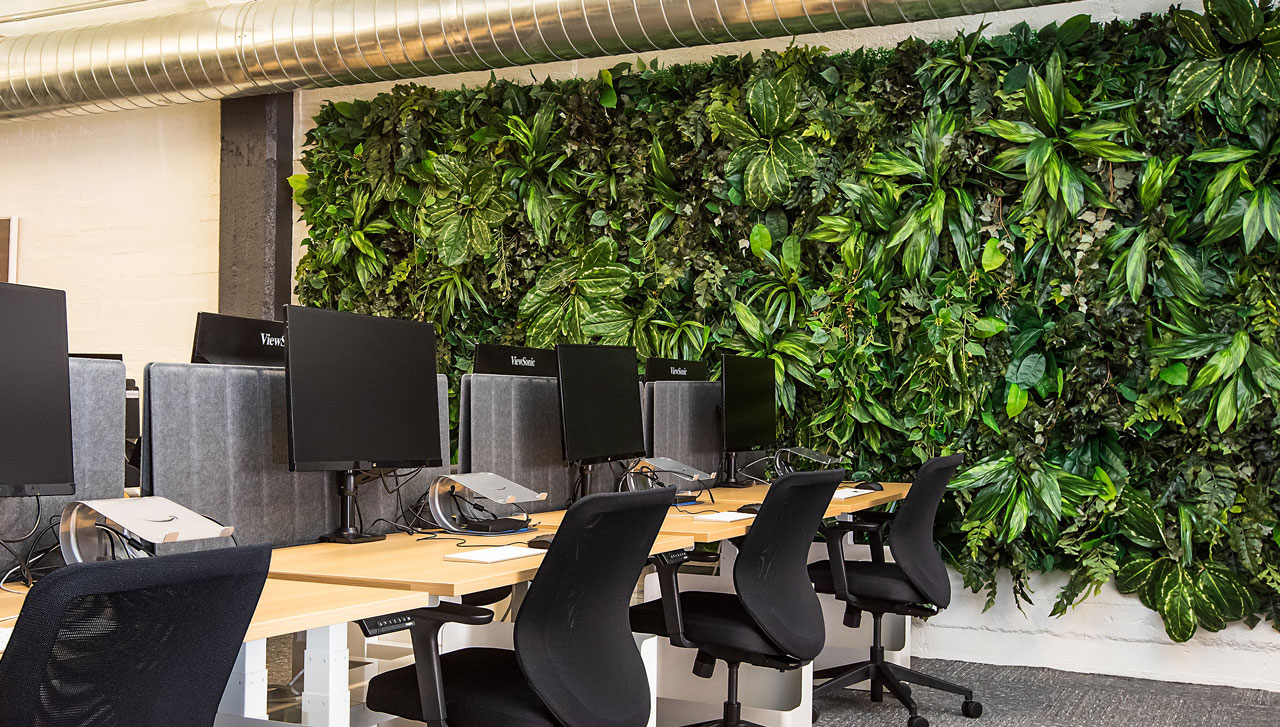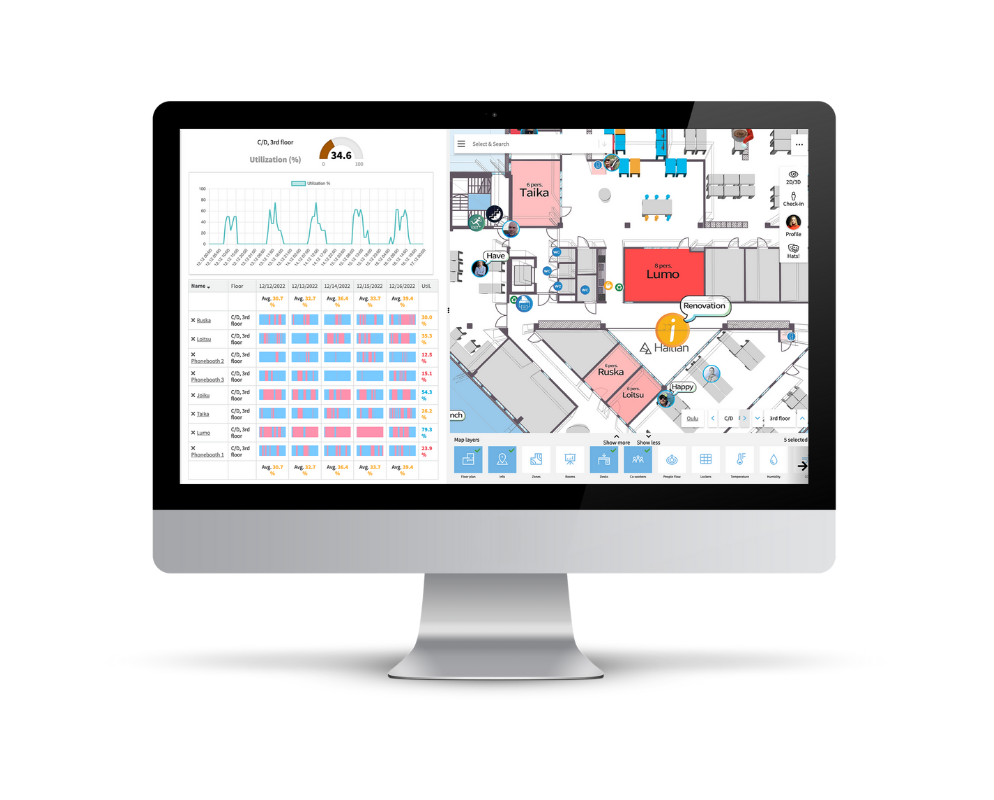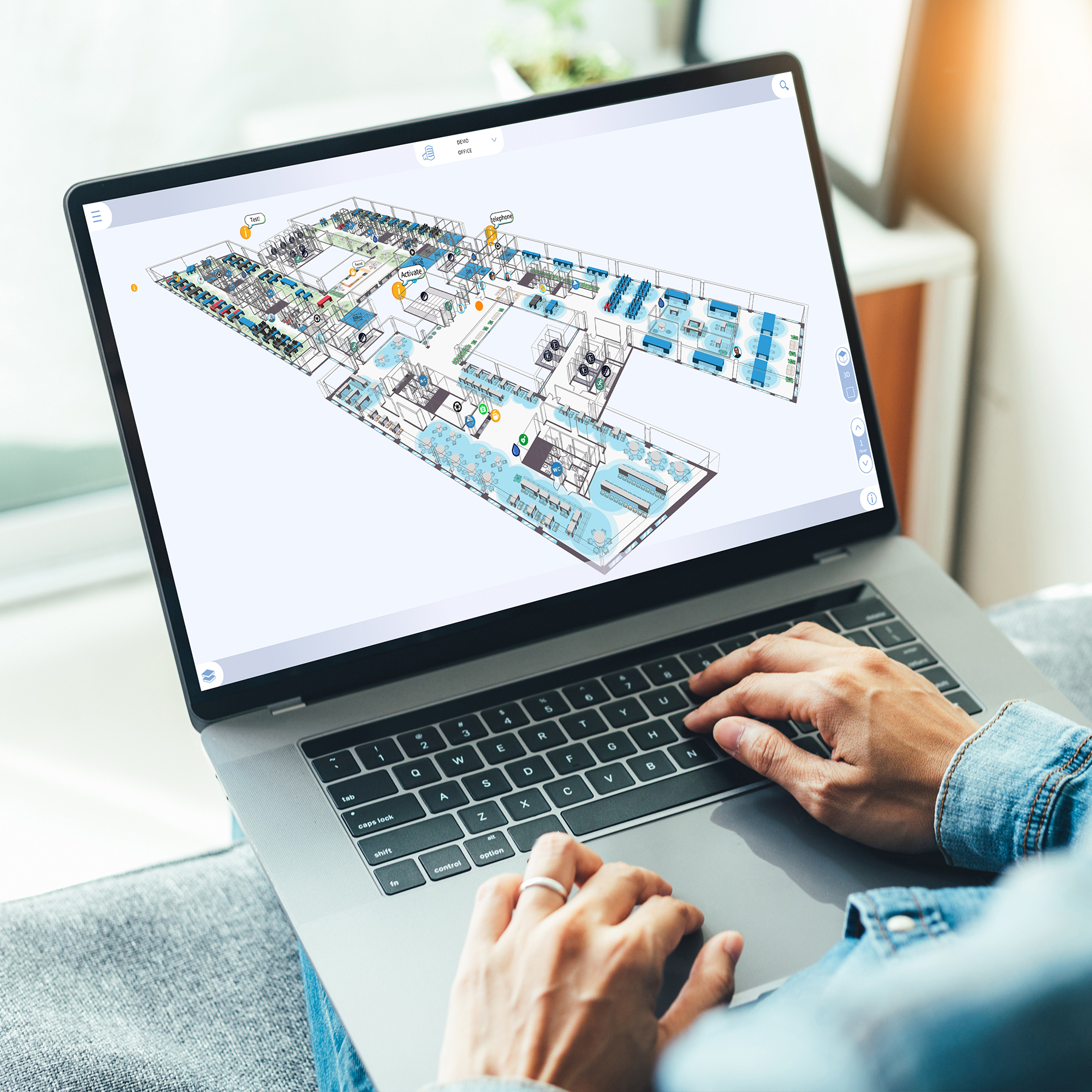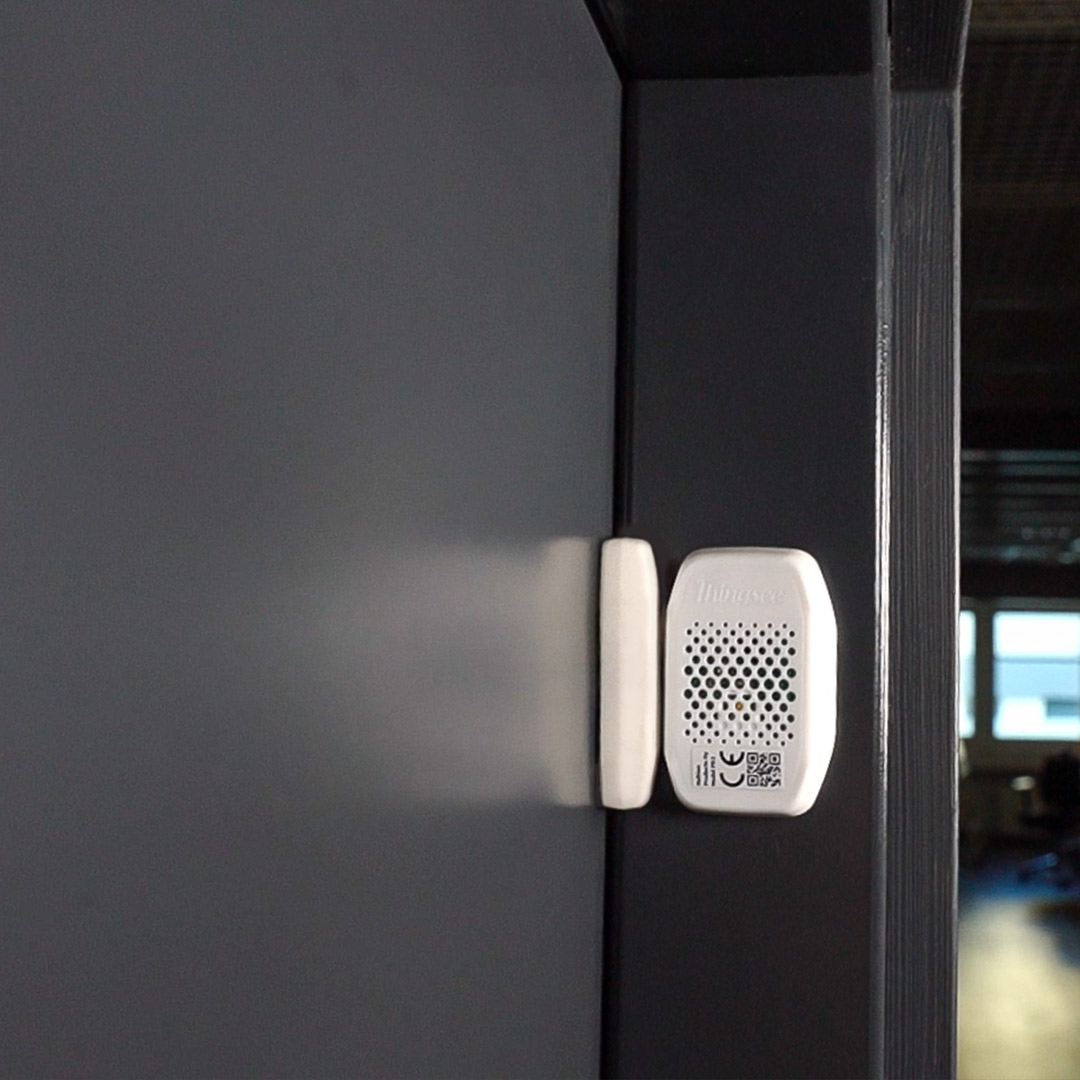The New Work Concept
The concept of New Work, also known as the “New Work Movement”, “Neue Arbeit”, and “Work 4.0” has its roots in the ideas of the German social philosopher Frithjof Bergmann, who began developing the concept in the 1970s and 1980s.
In the wake of the COVID-19 pandemic, New Work has become a popular topic in Germany as businesses adapt to hybrid and remote working practices, and seek guidance in this process. This approach to work and employment was designed to address the issues of a rapidly changing labor market and the impact of technological advancements on traditional work structures. Where traditional forms of “Old Work” were a product of industrial society, New Work is a product of the society in which we live today, the knowledge and information age.
New Work emphasizes flexibility, creativity, and self-fulfillment in the workplace, aiming to create a more sustainable and meaningful work environment. With the increasing automation of jobs and the emergence of the gig economy, the relevance of the New Work concept has grown exponentially in recent years.
Core Concepts of New Work
The New Work concept encompasses several core ideas that, together, form a holistic approach to work and employment. These include:
Flexibility
New Work encourages organizations to adopt flexible work arrangements, allowing employees to have greater control over their work schedules and environments. This may include remote work, flexible hours, or job-sharing arrangements, all of which aim to improve work-life balance and employee satisfaction.
Autonomy
Central to the New Work philosophy is the belief that individuals should have greater autonomy over their work tasks and processes. This means empowering employees to make decisions about how they complete their tasks and fostering a culture of trust and collaboration.
Skill development and lifelong learning
New Work emphasizes the importance of ongoing skill development and learning throughout one’s career. This includes regular training and development opportunities, as well as encouraging employees to take responsibility for their professional growth.
Interdisciplinary collaboration
New Work encourages cross-functional and interdisciplinary teamwork, promoting cooperation between different departments or areas of expertise. This approach can lead to innovative solutions and improved decision-making processes.
Meaningful work
A key aspect of the New Work concept is the focus on creating a sense of purpose and fulfilment in the workplace. This involves aligning employees’ skills, passions, and values with their job responsibilities, ultimately fostering greater job satisfaction and engagement
Evolution of the New Work Concept
Since its inception, the concept of New Work has evolved significantly, adapting to the changing nature of work and the global economy. Some of the key changes include a greater focus on digital transformation, employee well-being, and environmental and social responsibility.
The rise of digital technology and the internet has had a profound impact on the New Work concept. Digital tools have facilitated remote work and flexible arrangements, enabling organizations to implement the core concepts of New Work on a much larger scale.
As awareness of mental health and well-being in the workplace has grown, the New Work concept has increasingly emphasized the importance of creating a supportive and nurturing work environment. This includes fostering a healthy work-life balance and addressing issues such as burnout and stress.
The growing emphasis on corporate social responsibility and sustainability has also impacted the New Work concept. Organizations are now encouraged to incorporate environmental and social considerations into their business strategies and practices, aligning with the values of employees who seek meaningful work. Hybrid working practices are one way organizations have been able to reduce their carbon footprint by the simple need to heat and power less office space.

Importance of New Work for Modern Organizations
The pandemic has given many organizations the impetus to adopt remote working solutions, but this only addressed the immediate need to facilitate people working from home during lockdowns. Many employees and employers have since gotten a taste for the benefits of working remotely, however, full adoption of many core concepts of New Work have yet to be realized by most organizations.
The adoption of the New Work concept is important for modern organizations for several reasons that remote working only began to hint at:
Attracting and retaining talent
In an increasingly competitive global labor market, organizations that embrace the principles of New Work are more likely to attract and retain top talent. By offering flexibility, autonomy, and meaningful work, employers can create a more appealing work environment that fosters loyalty and commitment.
Increased productivity and innovation
Research has consistently shown that employees who are engaged, motivated, and satisfied with their work are more productive and innovative. By implementing the principles of New Work, organizations can create a workplace culture that encourages creativity, collaboration, and problem-solving, leading to improved performance and better business outcomes.
Adaptability and resilience
The pace of change in the modern business environment is unprecedented, with technological advancements, economic shifts, and evolving customer demands constantly reshaping industries. Organizations that embrace the New Work concept are better equipped to adapt to these changes, as they foster a culture of continuous learning, flexibility, and interdisciplinary collaboration. This adaptability is crucial for businesses to thrive in an ever-changing landscape.
Employee experience and well-being
The New Work concept prioritizes employee well-being by promoting a healthy work-life balance, autonomy, and meaningful work. By addressing mental health and burnout, organizations can reduce absenteeism, turnover, and healthcare costs, while also enhancing their reputations as responsible employers.
As businesses are increasingly expected to take responsibility for their social and environmental impacts, the New Work concept provides a framework for organizations to align their operations with their values. By adopting sustainable practices and promoting social responsibility, businesses can foster a sense of purpose among their employees, while also meeting the expectations of their customers, investors, and regulators.
In conclusion, the New Work concept has become increasingly important for modern organizations as they navigate a rapidly changing and complex business environment. By fostering flexibility, autonomy, collaboration, skill development, and a focus on meaningful work, businesses can create a more engaged and productive workforce. Ultimately, adopting the New Work concept is not only beneficial for individual employees but also essential for organizations to thrive in today’s dynamic global economy.
New Work, Hybrid Work, and Remote Work
New Work, hybrid work, and remote work are all interrelated concepts that have gained significant traction in recent years as organizations adapt to evolving workforce needs and rapid advances in technology. While New Work serves as an overarching philosophy that emphasizes flexibility, autonomy, and meaningful work, hybrid, and remote work are specific manifestations of this philosophy that have become increasingly popular and relevant in the modern business landscape.
Hybrid work
Hybrid work refers to a flexible working arrangement in which employees split their time between working remotely and working in a physical office location. This model seeks to strike a balance between the benefits of remote work (such as increased autonomy and reduced commuting) and the advantages of traditional office-based work (such as in-person collaboration and social interaction). By allowing employees to choose the work environment that best suits their individual needs and preferences, hybrid work aligns with the New Work principles of flexibility and autonomy, ultimately contributing to improved work-life balance, job satisfaction, and overall well-being
Remote work
Remote work, on the other hand, refers to employees working entirely outside of a traditional office environment, typically from their homes or other remote locations. This arrangement can offer even greater flexibility and autonomy than hybrid work, as employees have complete control over their work schedules and environments. Remote work also aligns with the New Work concept of interdisciplinary collaboration, as it often involves working with colleagues, clients, or partners from different geographical locations and time zones. The rise of digital communication and collaboration tools has facilitated this form of work, allowing organizations to maintain productivity and efficiency while embracing the benefits of remote work.
Both hybrid and remote work models reflect the growing recognition that a one-size-fits-all approach to work is no longer sufficient in today’s dynamic and diverse workforce. By embracing these flexible work arrangements, organizations can better accommodate the individual needs and preferences of their employees, fostering a more inclusive and supportive work culture. In turn, this can lead to higher levels of employee engagement, satisfaction, and productivity, which are essential for business success in a competitive global market.

The Environmental and Social Aspects of New Work
In addition to the direct benefits for employees and organizations, hybrid and remote work models also align with the broader social and environmental goals of the New Work philosophy.
For instance, by reducing the need for commuting and business travel, these flexible work arrangements can contribute to reduced carbon emissions and air pollution, addressing the growing demand for environmentally responsible business practices. Moreover, the widespread adoption of remote and hybrid work has the potential to reshape urban landscapes, as it may lead to reduced demand for office space and increased demand for residential and mixed-use developments that support remote work.
However, it is important to recognize that hybrid and remote work models are not without their challenges. For instance, managing remote and hybrid teams can require new skills and approaches from leaders, such as effective communication, trust-building, and fostering a sense of belonging among geographically dispersed team members. Furthermore, organizations must invest in the necessary infrastructure and technology to support remote and hybrid work, ensuring that employees have access to the tools and resources they need to succeed in their roles.
The New Work concept is closely intertwined with the rise of hybrid and remote work. By embracing these models, organizations can better support the diverse needs of their employees, drive productivity and innovation, and contribute to broader social and environmental goals. However, to fully realize the benefits of hybrid and remote work, organizations must also invest in the necessary infrastructure, technology, and leadership capabilities to support these new ways of working.
How Technology Can Support New Work
The implementation of the New Work concept and the rise of hybrid and remote work models have highlighted the importance of optimizing workplace environments to promote productivity, enhance employee experience, and enable organizations to use office spaces more effectively while reducing costs. To achieve these goals, various technologies such as occupancy sensors, desk and room booking solutions, office environmental sensors, air quality sensors, and office utilization reports, can play a critical role. These technologies can provide valuable insights into workplace dynamics, facilitate data-driven decision-making, and enable organizations to create a more efficient and supportive work environment.
Occupancy sensors
These sensors can detect the presence of employees in different areas of the office, providing real-time data on space utilization. By analyzing this data, organizations can identify underutilized areas and optimize their office layout to better accommodate employee needs. For example, if the data shows that certain meeting rooms or collaborative spaces are consistently overcrowded, an organization can consider reconfiguring the space to create additional capacity. Moreover, occupancy data can help organizations make informed decisions about office space expansions or contractions, ultimately reducing costs associated with unused or inefficiently used spaces.

Booking solutions
With the rise of hybrid and remote work, flexible desk and room booking solutions have become essential for managing shared office spaces effectively. These solutions enable employees to reserve workstations, meeting rooms, or other facilities as needed, ensuring that resources are available when required and minimizing conflicts. By providing employees with the flexibility to choose their workspaces and environments, organizations can enhance employee satisfaction, autonomy, and overall productivity.

Utilization reports
By combining data from various sensors and booking solutions, organizations can generate comprehensive office utilization reports. These reports can provide insights into how employees are using office spaces, identify trends and patterns, and inform strategic decisions about space allocation, office design, and resource management. For example, if the reports reveal that remote work is prevalent among certain teams, an organization might consider redesigning its office layout to create more collaborative spaces for in-person interactions or reduce its overall office footprint to save on costs.

Digital Twins
Digital twins are virtual representations of physical spaces, such as offices, factories, or warehouses. They use real-time data to simulate the behavior of the physical space and provide insights into how it is being used. This can help organizations to optimize their workspaces, improve energy efficiency, and reduce costs. Digital twins can also be used to test out new layouts or configurations before implementing them in the physical space.

Environmental sensors
Sensors that monitor temperature, humidity, and air quality can help organizations create a comfortable and productive work environment. Indoor air quality has a direct impact on employee health, well-being, and productivity. By analyzing the data collected from these sensors, organizations can identify areas with suboptimal conditions and make necessary adjustments to improve employee comfort and well-being. For instance, improving ventilation and adjusting temperature can have a significant impact on employee productivity and satisfaction, ultimately fostering a better employee experience.

The effective use of technologies such as occupancy sensors, desk and room booking solutions, office environmental sensors, and office utilization reports can significantly enhance workplace optimization and employee well-being efforts. By leveraging these technologies, organizations can create a more productive, comfortable, and efficient work environment that supports the New Work concept and the evolving needs of a hybrid and remote workforce.
Moreover, these technologies can help organizations reduce costs and use office spaces more effectively, enabling them to adapt to changing workplace dynamics and remain competitive in today’s fast-paced business landscape.


